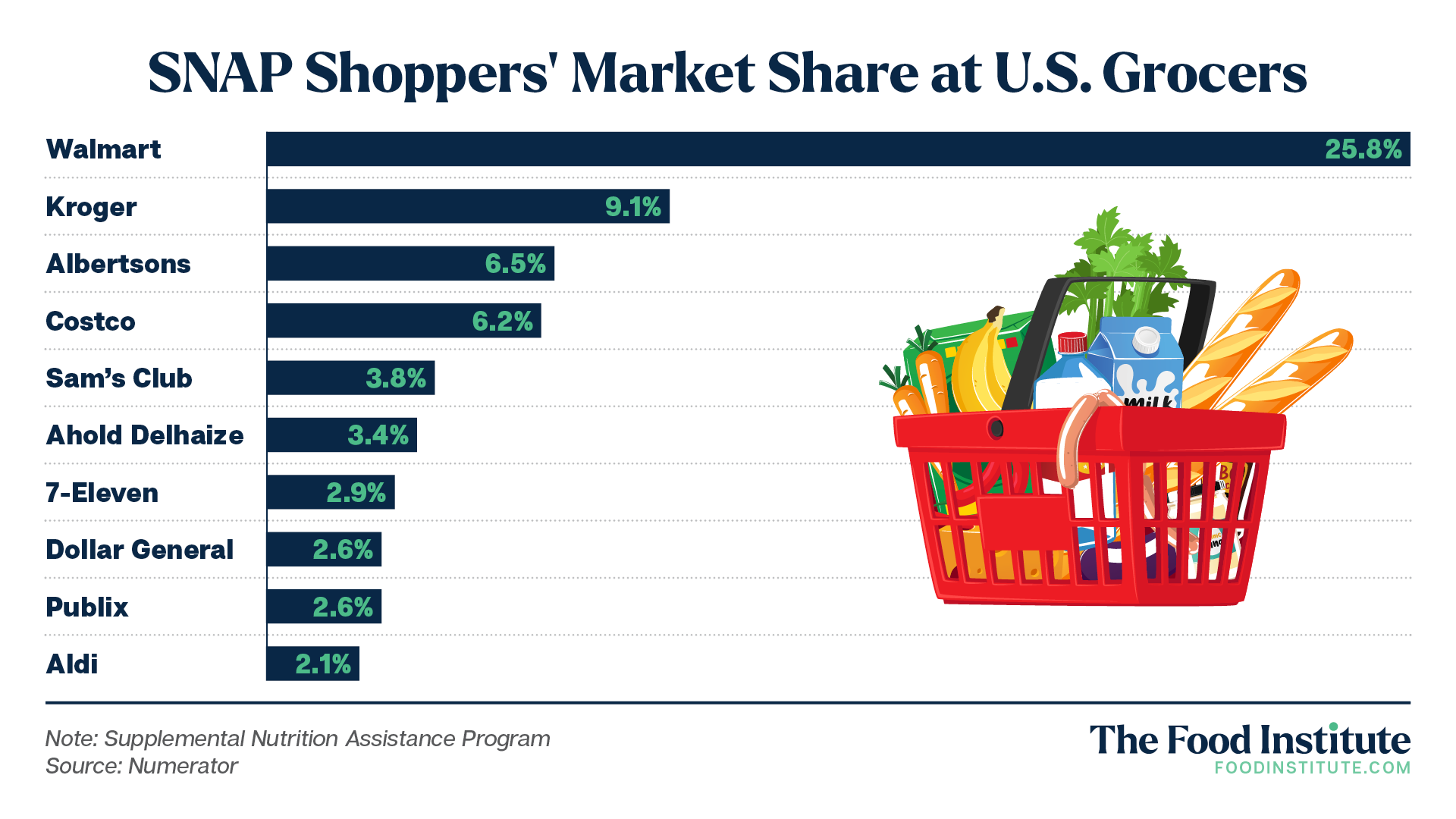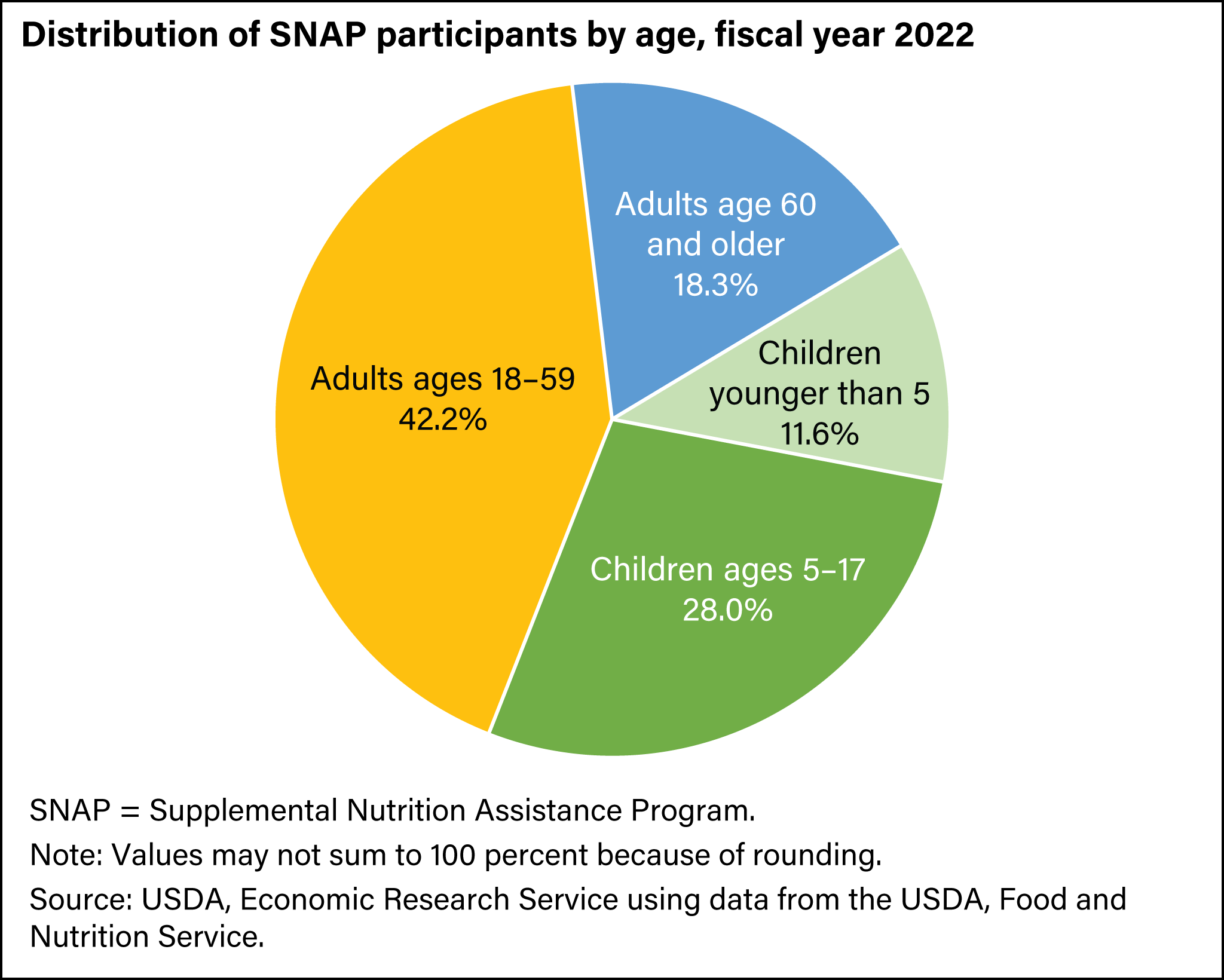The National Grocers Association, representing nearly 22,000 U.S. stores and a significant portion of the independent grocery, has recently led efforts to urge Congress to reject a proposal that will slash Supplemental Nutrition Assistance Program (SNAP) funding by 20%.
“At the heart of every independent grocer across the nation is a simple but powerful belief that no American should go hungry. With this core value in mind, we are urging Congress to limit SNAP funding cuts during the reconciliation process,” said NGA’s group VP for government relations Stephanie Johnson, RDN, in a meeting with senators and congressmembers.
On the platform, Johnson explained that SNAP serves two key purposes for Americans: to mitigate the issue of hunger domestically, and to help consumers support local businesses and strengthen communities.
The recent proposed cuts to SNAP, formerly food stamps, comes from a House Republican-led initiative to cut $230 billion from USDA budgets, which oversees SNAP.
If approved, the cut would be three times bigger than the largest reduction to date, after adjusting for inflation, reports CNBC. Moreover, most of the USDA spending cuts would target the food program. According to USDA data from FY 2023, SNAP accounted for roughly 68% of nutrition assistance spending.
In a statement, USDA defended the decision, noting that the Trump administration is working to right-size the program.
“The Supplemental Nutrition Assistance Program is just that, supplemental,” said the statement, according to the news source. “It was never intended to be a windfall for food companies and retailers, rather a temporary safety net for families and communities in need.”
The recent effort complements a letter from the Food Research & Action Center and roughly 1,800 national, state, and local organizations to reject any proposals to cut or weaken the program.
“Any cut to benefits or reduced access to participation will have serious consequences for children, older adults, people with disabilities, and those living in rural areas who rely on this support to put food on the table,” said Crystal FitzSimons, interim president of FRAC.
What This Could Mean for Grocers
Beyond supporting local communities and independent grocers, these legislative decisions may affect traditional grocers and their mechanization strategies.
Numerator data shows that Walmart, Kroger, and Albertsons have shopper bases that represent the largest share of SNAP participants. For Walmart, this also means that an alarming 94.3% of SNAP participants shop their selection, spending an average of $2,350 in the last 12 months ending July 31.
SNAP shoppers also spend a larger portion of their budgets on groceries and make smaller, more frequent trips, resulting in shopping an average of 6.4 retailers for groceries each month, compared to 5.9 for non-SNAP shoppers, according to the report.
Since 2020, major retailers have worked to make it easier for SNAP participants to use their Electronic Benefits Transfer (EBT) cards for both in-store and online orders. Myriad traditional grocers, including Walmart, as well as online delivery services, such as Instacart and DoorDash offer reduced-price plans to increase access to these services while on a budget.
It’s no surprise the industry is worried: these grocers have invested heavily in these shoppers, and have created operational efficiencies to support them.
Top brands, including Campbell’s, General Mills, and The Hershey Company, also threaten market share from SNAP budget cuts, as nearly 9% of food-at-home spending comes from these shoppers, according to an estimate from Bernstein Research, notes CNBC.
Who Does SNAP Affect?
The latest USDA data found that children until the age of 17 account for nearly 40% of SNAP participants.
In FY 2023, SNAP recipients represented 12.6% of the U.S. population, with upwards of 16% of the populations in several states receiving benefits, namely Illinois, Louisiana, New Mexico, Oregon, Oklahoma, Washington D.C., and West Virginia.
Economic analysis from NGA found that SNAP social benefits extend beyond this population. Funding reportedly supports 388,000 jobs, more than $20 billion in direct wages, and over $4.5 billion in state and federal tax revenue.
“SNAP dollars circulate directly through local businesses, helping to pay local wages, keep shelves stocked, and support essential services in communities nationwide,” said Johnson.
SNAP on the Chopping Block?
The current administration is keen on cleaning up SNAP spending. Agriculture Secretary Brooke L. Rollins recently stated that states are abusing the program by allowing “able-bodied” adults to satisfy work requirements with purportedly lenient work requirement waivers.
“Since my confirmation, I have reiterated the states are our partners, and this includes ensuring our nutrition programs are tied to putting Americans back to work,” Rollins said in a statement.
Last month, Arkansas Governor Sarah Huckabee Sanders submitted a waiver to USDA to ban soda and candy from and include hot rotisserie chicken in Arkansas’s program, invoking the Make America Healthy Again movement.
Rollins applauded the decision, adding she encourages other states to follow Arkansas’ lead.
Additionally, USDA recently called to ensure undocumented immigrants do not receive benefits, pursuant to President Donald Trump’s Executive Order 14218 titled “Ending Taxpayer Subsidization of Open Borders.”
Nevertheless, a recent report from The Washington Post found that, although some in the GOP want to cut the program, Republican committee chairs say otherwise.
House Agriculture Committee Chairman Glenn Thompson, for example, told the news source that his panel wouldn’t force any benefits formula overhaul. Senate Agriculture Committee Chairman John Boozman agreed, adding that he is “not in favor of reducing benefits.”
The Food Institute Podcast
It’s tariff time, and companies the world over are working to better understand how their operations will be impacted. Jodi Ader from RSM US LLP joined The Food Institute Podcast to discuss which products and inputs are currently subject to tariffs, and how to best mitigate supply chain risks.














